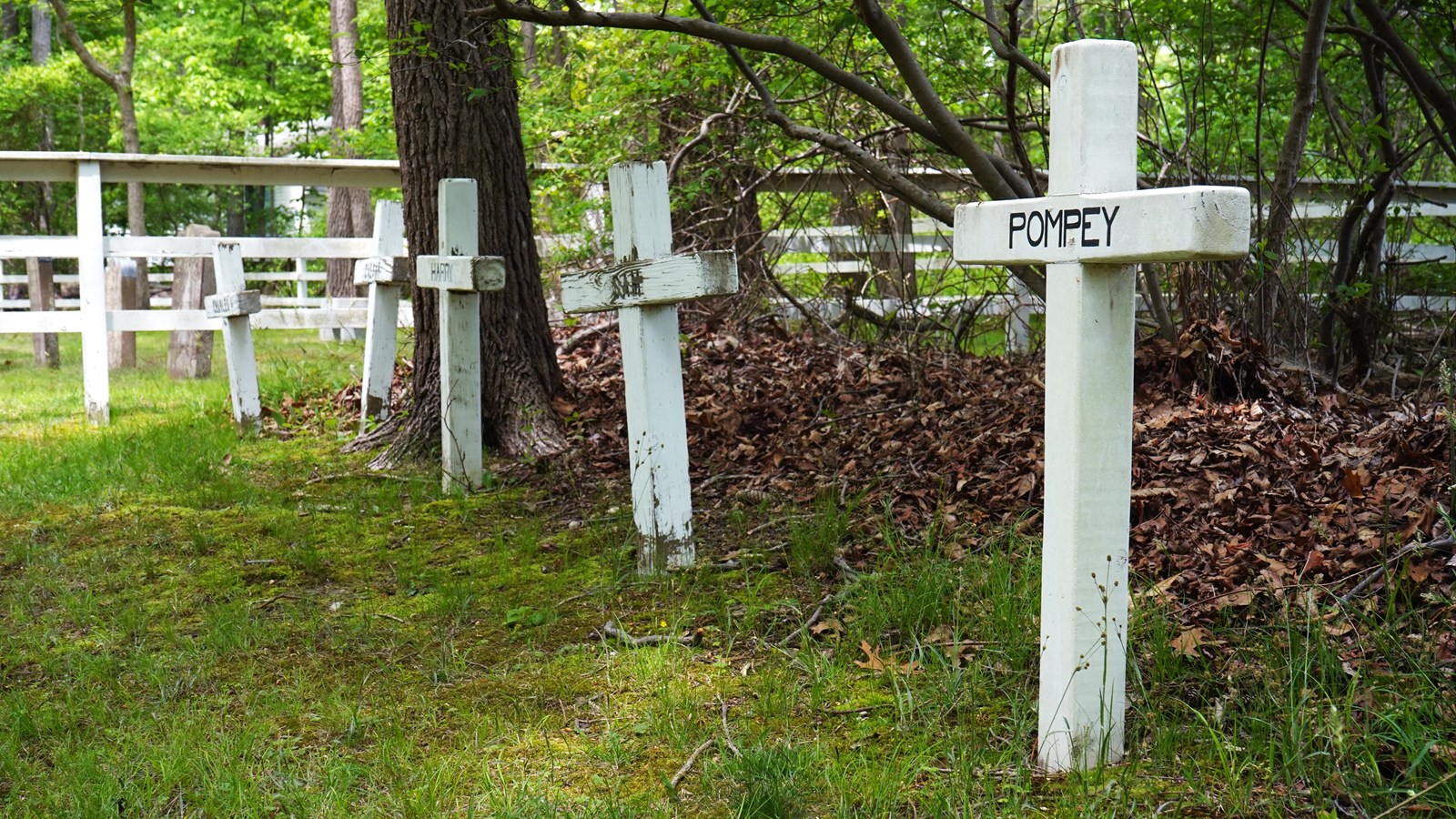Last updated: May 28, 2021
Place
Squirrel Lane Trail: White Cross Memorial

NPS/Sucena
The crosses before you bear the names of Black laborers engaged at the Floyd Estate. While numerous family memoirs, journals, and other writings suggest that the crosses here mark the graves of enslaved workers, the historical records of the Estate are much less clear. It is possible that these crosses do not mark actual graves, but rather serve as memorials.
Our research is ongoing, but these names are beginning to come into focus. “Lon” likely referred to London Edwards, called “Uncle Lon” or “Lun” by Floyd family members. We do not know the details of his birth or how he came to the Floyd Estate, but from the 1850 census we know that he was born in New York around 1775, just one year before the signing of the Declaration of independence. He was an agricultural laborer, enslaved by William and/or his son Nicoll Floyd and manumitted, or “released from slavery,” around 1820. After manumission, Lon continued to work on the estate’s farm, while his wife Hannah “cooked up at the house.” He took pride in his boats, and is remembered navigating “[Home Creek] and [Moriches] Bay in search of crabs, eels, and bunkers…”
Like other enslaved people at the Floyd Estate, Lon and Hannah lived in a cabin about a mile distant from the manor house. Their cabin, along the banks of what became known as Lon’s Creek, was an informal gathering spot for the community of Black and Indigenous workers traveling between the Poospatuck Reservation, other cabins for enslaved and later free workers, and the estate. Long after his death in February 1860, Lon’s Creek continues to bear his name.
